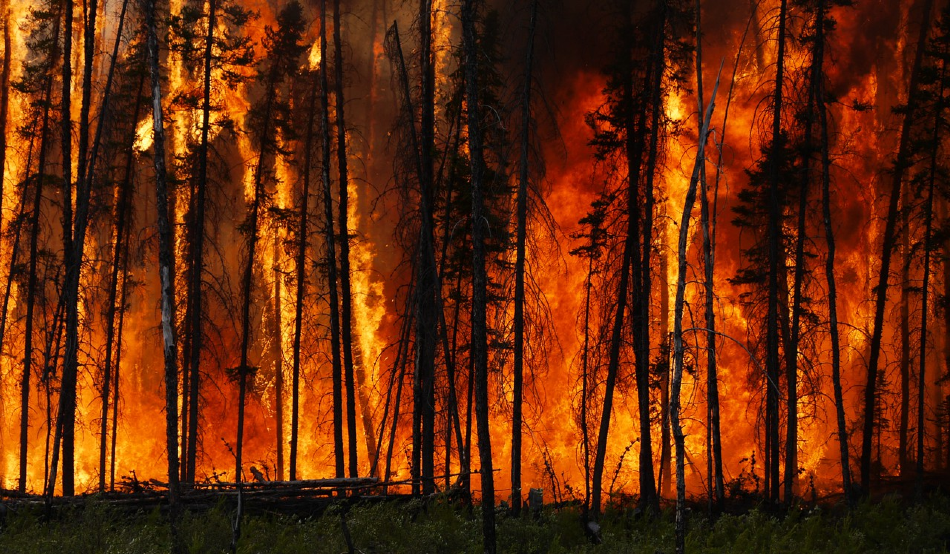Jan 22 2020
According to a new study, air pollutants resulting from the smoke of fires, that occurred as far as the southeastern United States and Canada, traveled many days and hundreds of miles to reach New York City and Connecticut, where it led to increased concentrations of pollution.
 Flames rise from an experimental forest fire in Canada’s remote Northwest Territories. Image Credit: Stefan Doerr via Imaggeo.
Flames rise from an experimental forest fire in Canada’s remote Northwest Territories. Image Credit: Stefan Doerr via Imaggeo.
For this study, scientists in the laboratory of Drew Gentner, an associate professor of chemical and environmental engineering, supervised the quality of air at the Yale Coastal Field Station located in Guilford, Connecticut, as well as four other locations in the New York metropolitan area.
The study was recently published in the Atmospheric Chemistry and Physics journal of the European Geosciences Union (EGU) on January 21st, 2020.
In August 2018, the researchers noticed two spikes in the air quality in the presence of air pollutants, and both coincided with the air quality advisories for ozone in the New York area. These kinds of pollutants were found in the wildfire smoke and regulated agricultural burning.
The researchers used three kinds of evidence—such as smoke maps from satellite imagery, data from the observation sites, and backtracking 3D models of air parcels (both the models and maps were created by the National Oceanic and Atmospheric Administration)—and effectively traced the origins of the pollutants in the first event to fires that occurred on Canada’s western coast and those in the second event to fires that occurred in the southeastern United States.
The main source of air pollutants that affect climate, air quality, and human health is biomass burning. Biomass burning takes place on a large scale during wildfires, and also during certain regulated burning events.
Such events discharge several gases into the air and create particulate matter (PM), such as black carbon (BC) and other primary organic aerosols (POA), the diameter of which is below 2.5 µm. Termed PM2.5, particulate matter has been demonstrated to cause serious health effects upon inhaling.
Although components that are more reactive are usually converted chemically closer to their place of origin, PM2.5 has a tendency to last for a longer time. With regard to this study, that aspect allowed most of the PM2.5 to travel from the fires to the monitoring locations—a duration spanning from a few days to around a week.
Given the sensitivity of people to the health effects emerging from exposure to PM2.5, this is certainly something that needs to be considered as policy-makers put together long-term air quality management plans.
Dr Drew R. Gentner, Associate Professor, Department of Chemical and Environmental Engineering, Yale University
The effects of the smoke of wildfires would probably become more and more significant in the years to come.
When people are making predictions about climate change, they’re predicting increases in wildfires, so this sort of pollution is likely going to become more common. So when people are planning for air pollution and health impacts, you can’t just address local sources.
Haley Rogers, Study Lead Author and Undergraduate Student, Yale University
While there was a drop in PM2.5 levels over distance and time, Jenna Ditto, a graduate student in Gentner’s laboratory and the co-author of the study, noted that awareness of the presence of PM2.5 in the air is crucial to public health.
Studies indicate that there are no safe levels of PM2.5, so typically any level of it is worth taking a look at.
Jenna Ditto, Study Co-Author and Graduate Student, Department of Chemical and Environmental Engineering, Yale University